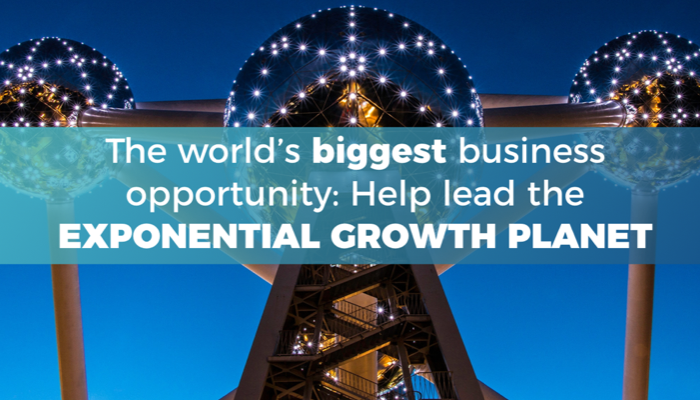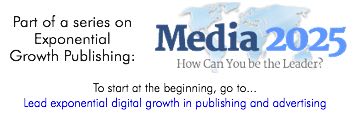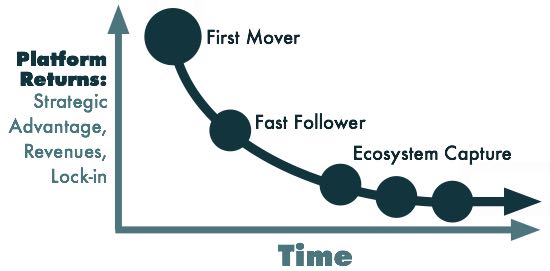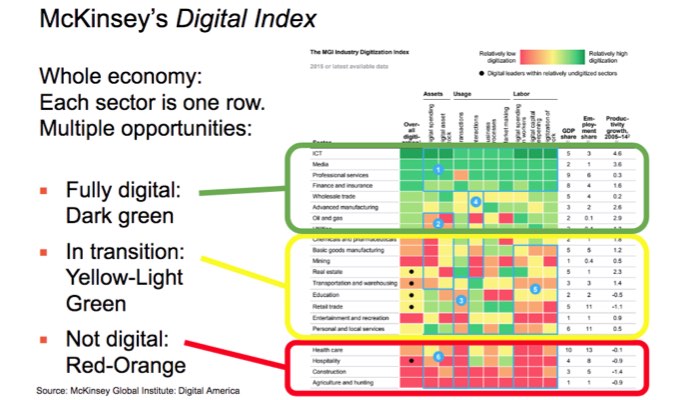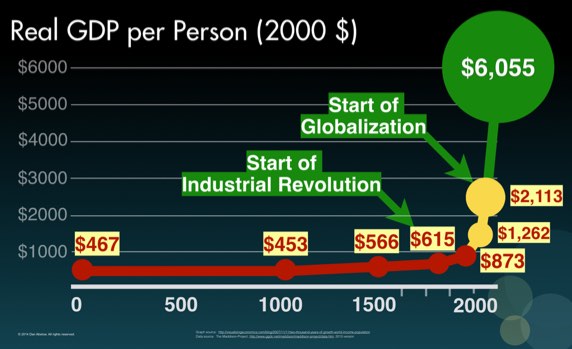Lesson for leaders
How can publishers take back leadership from the tech giants, Google and Facebook? The way to defeat their platforms is to change the paradigm. Exponential growth publishing switches the paradigm from “corporate-first” to “people-first.” It keeps adding people-first processes until exponential growth is reached.
Paradigm-shift competition: it’s worked again and again
Microsoft switched computing’s paradigm three times, propelling it to tech’s world leadership:
- Microsoft DOS ran PCs that could put a PC on every desk and in every home, achieving Bill Gates’ revolutionary vision.
- Windows switched computing from text-based screens to a graphical interface (GUI).
- Microsoft Office switched business computing from multiple different programs to one uniform graphical experience.
Competing by using paradigm shifts gave Microsoft leadership, but it missed the paradigm shift to the Internet and lost the lead. Microsoft is playing catch up behind the new leaders like Google, Facebook, and Amazon.
Now Apple is shifting the paradigm to mobile, rocking the Internet again:
- Smart phones are eclipsing desktop and laptop PCs.
- Immediate on-demand expectations are transforming consumption, including shopping, media, entertainment, messaging, and information.
- New on-demand capabilities like AI, voice interfaces, chatbots, and more make some companies leaders while others fade.
This shift to mobile is forcing Google and Facebook to adapt to this new paradigm:
- Facebook is nearly fully mobile, with mobile producing 87% of its ad revenue in Q2 2017.
- Google is also adapting, with 67% of its digital ad revenue coming from mobile in 2017.
What happens if publishers and media add a powerful “people-first” paradigm that “corporate-first” Google and Facebook find difficult to follow? Publishers win.
Change everything with an always-on digital economy
This McKinsey table shows the whole economy in one quick view. Every row is a sector of the economy. Most of the economy is not digital (red and orange) or it is in transition (yellow and light green). Here’s some of what could use easy entry to this new digital Earth:
- Local businesses on main streets everywhere: not just in this country, but all over the world.
- Professional services that serve businesses and the public.
- Customers in connected consumption with their preferred vendors.
- Suppliers and logistics throughout global supply chains.
- Cities, schools, health care, entertainment, and travel.
- Non-digital businesses and industries—not just tech-based companies.
The scope multiplies into a fully interactive digital Earth that can include the physical world.
Start exponential growth for all
Look at our situation historically. We are at the upper right of a hockey-stick growth curve that is two centuries young.
The dramatic changes in the 25 years since 1993, when the Web browser arrived, shows how much we are growing. This exponential growth platform accelerates our ascent. When a people-first platform radically increases people’s abilities and learns from their new achievements, it then delivers the new improvements immediately to everyone. New “people-first” technology starts a digital Earth that makes everyone capable, powerful, and successful. Every person, everywhere, can be the best in the world.
If you are a publisher your next step is to realize how much we now know, and how much you can achieve.
Disclaimer: All articles in Media 2025 are provided as-is for general information. Only the issued patent, such as U.S. Patent 9,183,560 “Reality Alternate,” and patent pending application and specification, describe patented and patent pending technology.
Related articles in Media 2025:
- First article — Executive Summary: Lead exponential digital growth through publishing and advertising
- Previous article: Tech surrounds us, so use the best of it to succeed immediately
- Next article: Use Partnership Capitalism to raise everyone’s success, lead markets and grow profits

